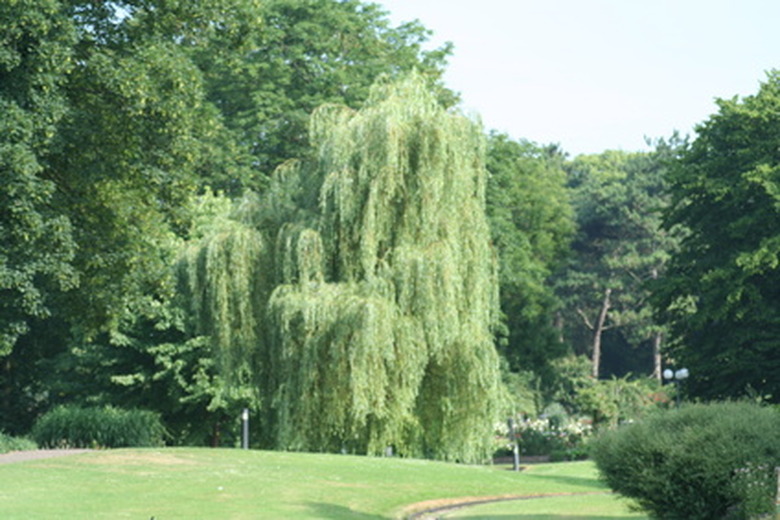Why A Weeping Willow Loses Leaves
The weeping willow tree, a member of the Salicaceae family, can be planted in USDA Hardiness Zones 2 through 9. They can grow from 45 to 70 feet high, and a healthy willow tree will produce a canopy in a width equal to its height. A diseased willow tree, however, may lose its leaves until the disease is identified and corrected.
Signs of Willow Scab
If a weeping willow suddenly has leaves that turn brown or black and fall to the ground, one culprit may be willow scab. If the tree disease has progressed, an olive-brown velvet spore masses will form on dead leaves, according to Bartlett Tree Experts.
Willow Scab Causes
The fungus Venturia saliciperda is the cause of willow scab, according to Ron Smith, horticulturist for Hortiscope. The fungus attacks young leaves and leaves a spore mass on dead leaves that helps the disease spread to new growth the next year.
- The weeping willow tree, a member of the Salicaceae family, can be planted in USDA Hardiness Zones 2 through 9.
- If the tree disease has progressed, an olive-brown velvet spore masses will form on dead leaves, according to Bartlett Tree Experts.
Black Canker Symptoms
Black canker is another fungus that often coincides with willow scab, causing damage to the trunk and thick branches of the willow tree. Black canker symptoms include dry, dark-colored leaves that fall off and peach-colored spores on dead branches and leaves.
Treatment Options
Treatment options for black canker and willow scab include properly timed fungicide treatments and pruning of infected branches, according to Bartlett Tree Experts. When infected branches are pruned, the severity of the disease is reduced and the tree will regain some lost vigor.
Prevention/Solution
It might not be possible to keep a willow tree from becoming infected with either black canker or willow scab, but early treatment with careful pruning will help keep a weeping willow healthy for years. Weeping willows are susceptible to disease and grow very quickly, making their branches weak and breakable. Good pruning is key to keeping a willow healthy.
- Black canker is another fungus that often coincides with willow scab, causing damage to the trunk and thick branches of the willow tree.
- It might not be possible to keep a willow tree from becoming infected with either black canker or willow scab, but early treatment with careful pruning will help keep a weeping willow healthy for years.
